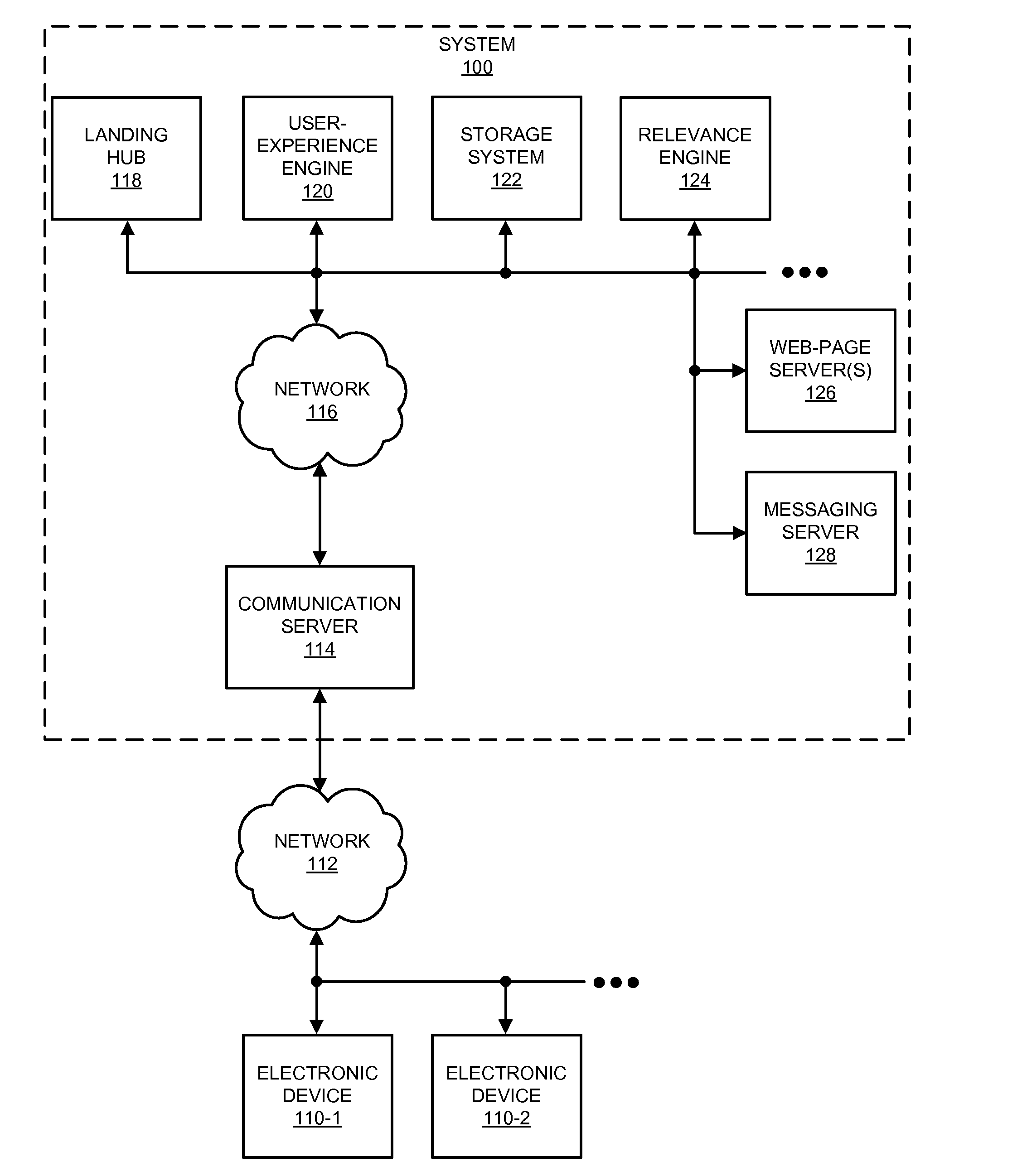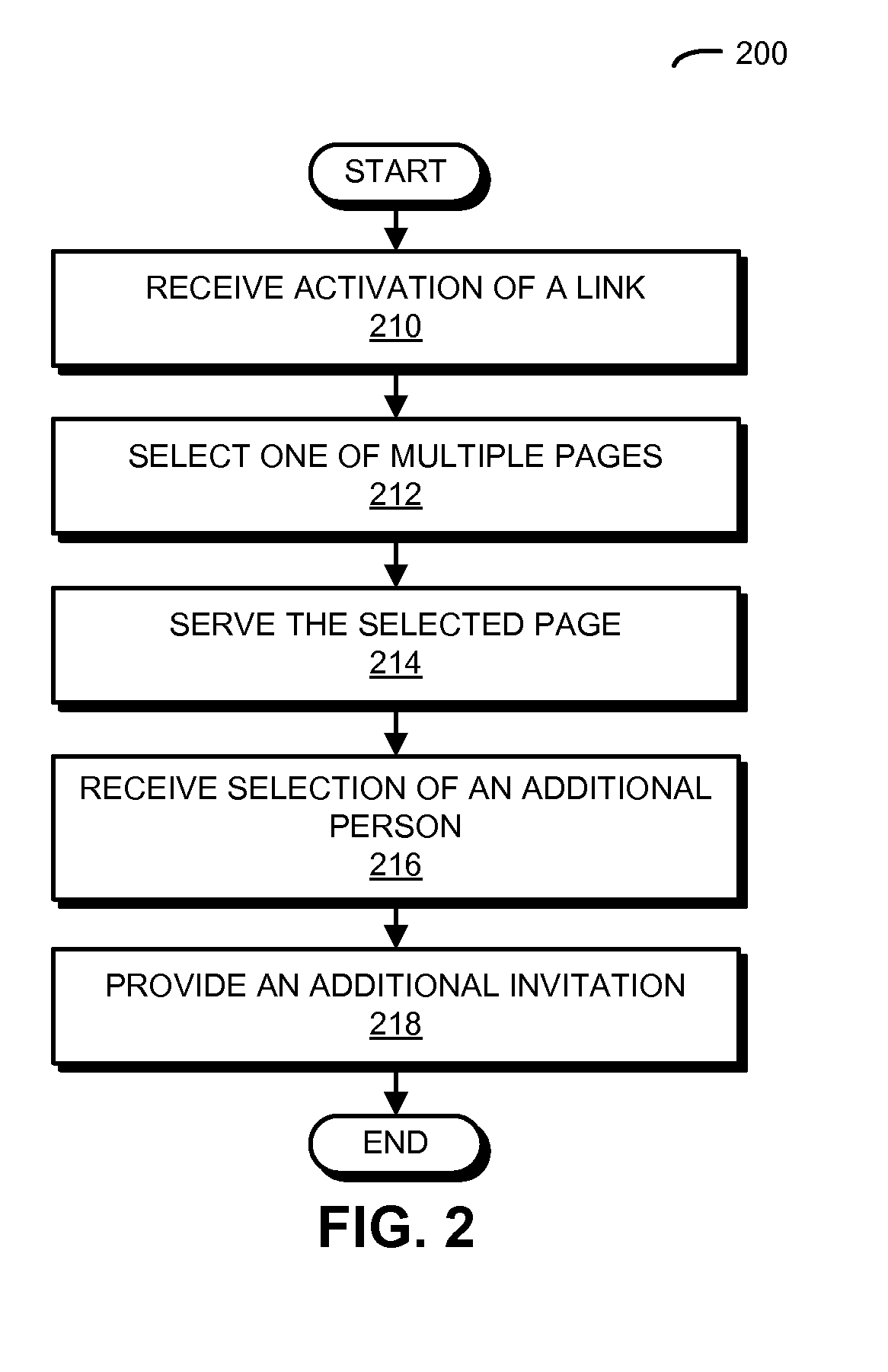User-activity-based routing within a website
a technology of user activity and website, applied in the field of user activity-based routing within the website, can solve the problems of reducing the number of invitation messages, processing poses several challenges, and user may become bored
- Summary
- Abstract
- Description
- Claims
- Application Information
AI Technical Summary
Benefits of technology
Problems solved by technology
Method used
Image
Examples
Embodiment Construction
[0019]Embodiments of a system and a technique for providing an invitation message for use with the system are described. When a user of a social network accepts an invitation message to connect with another user of the social network, the system may use a history of user activity and one or more user-experience criteria (which may assess freshness of the information presented to the user, such as a number of impressions of the information, user action in response to the information, variation in user behavior during a time interval, etc.) to determine where to direct the user within the social-network website. In particular, based on the history of user activity associated with an in-network page (such as a web page) with recommendations for possible connections for the user within the network of users (which are sometimes referred to as ‘in-network connections’), the system may determine whether or not the one or more user-experience criteria have been met (e.g., has the user been ...
PUM
 Login to View More
Login to View More Abstract
Description
Claims
Application Information
 Login to View More
Login to View More - R&D
- Intellectual Property
- Life Sciences
- Materials
- Tech Scout
- Unparalleled Data Quality
- Higher Quality Content
- 60% Fewer Hallucinations
Browse by: Latest US Patents, China's latest patents, Technical Efficacy Thesaurus, Application Domain, Technology Topic, Popular Technical Reports.
© 2025 PatSnap. All rights reserved.Legal|Privacy policy|Modern Slavery Act Transparency Statement|Sitemap|About US| Contact US: help@patsnap.com



